Tiejun Cui
Multi-RIS Deployment Optimization for mmWave ISAC Systems in Real-World Environments
Aug 10, 2025Abstract:Reconfigurable intelligent surface-assisted integrated sensing and communication (RIS-ISAC) presents a promising system architecture to leverage the wide bandwidth available at millimeter-wave (mmWave) frequencies, while mitigating severe signal propagation losses and reducing infrastructure costs. To enhance ISAC functionalities in the future air-ground integrated network applications, RIS deployment must be carefully designed and evaluated, which forms the core motivation of this paper. To ensure practical relevance, a multi-RIS-ISAC system is established, with its signal model at mmWave frequencies demonstrated using ray-launching calibrated to real-world environments. On this basis, an energy-efficiency-driven optimization problem is formulated to minimize the multi-RIS size-to-coverage sum ratio, comprehensively considering real-world RIS deployment constraints, positions, orientations, as well as ISAC beamforming strategies at both the base station and the RISs. To solve the resulting non-convex mixed-integer problem, a simplified reformulation based on equivalent gain scaling method is introduced. A two-step iterative algorithm is then proposed, in which the deployment parameters are determined under fixed RIS positions in the first step, and the RIS position set is updated in the second step to progressively approach the optimum solution. Simulation results based on realistic parameter benchmarks present that the optimized RISs deployment significantly enhances communication coverage and sensing accuracy with the minimum RIS sizes, outperforming existing approaches.
Electromagnetic Property Sensing in ISAC with Multiple Base Stations: Algorithm, Pilot Design,and Performance Analysis
May 10, 2024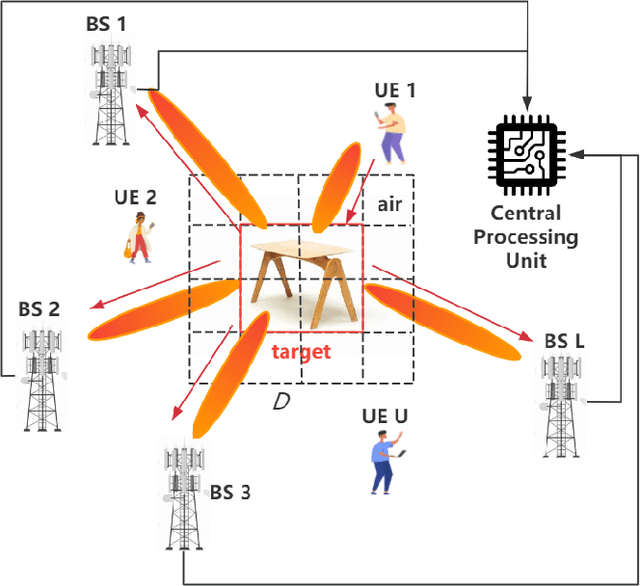
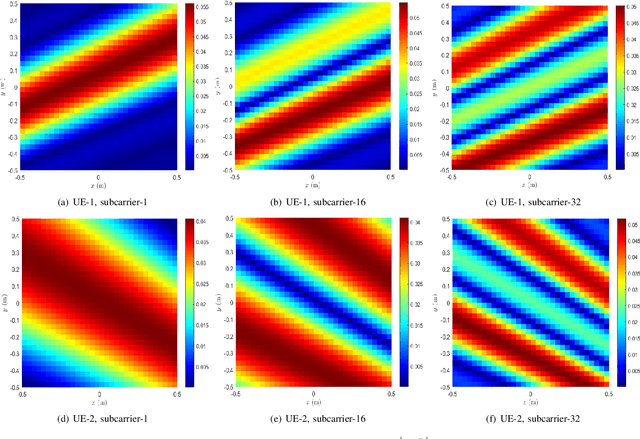
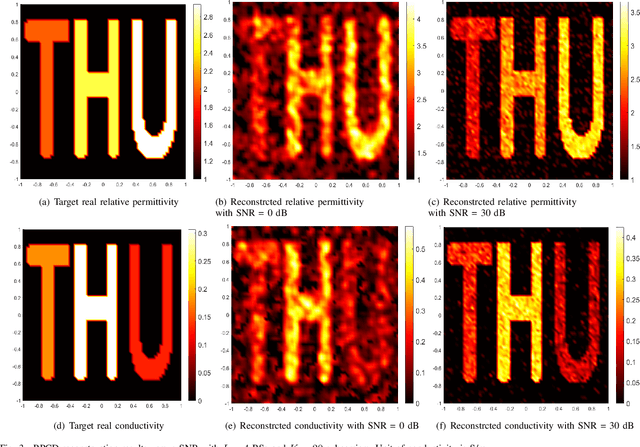
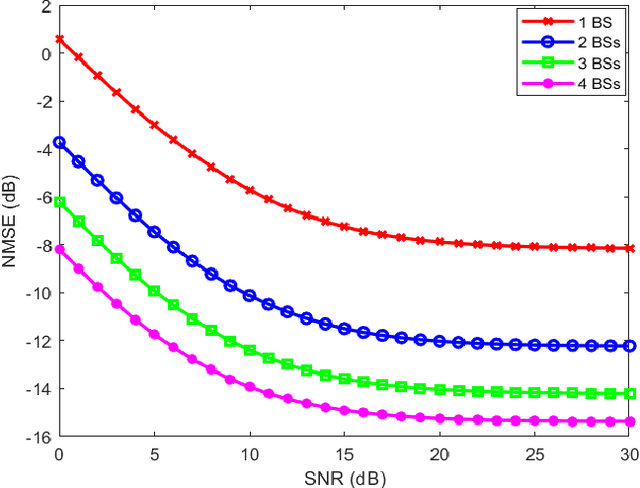
Abstract:Integrated sensing and communication (ISAC) has opened up numerous game-changing opportunities for future wireless systems. In this paper, we develop a novel scheme that utilizes orthogonal frequency division multiplexing (OFDM) pilot signals to sense the electromagnetic (EM) property of the target and thus identify the materials of the target. Specifically, we first establish an EM wave propagation model with Maxwell equations, where the EM property of the target is captured by a closed-form expression of the channel. We then build the mathematical model for the relative permittivity and conductivity distribution (RPCD) within a predetermined region of interest shared by multiple base stations (BSs). Based on the EM wave propagation model, we propose an EM property sensing method, in which the RPCD can be reconstructed from compressive sensing techniques that exploits the joint sparsity structure of the EM property vector. We then develop a fusion algorithm to combine data from multiple BSs, which can enhance the reconstruction accuracy of EM property by efficiently integrating diverse measurements. Moreover, the fusion is performed at the feature level of RPCD and features low transmission overhead. We further design the pilot signals that can minimize the mutual coherence of the equivalent channels and enhance the diversity of incident EM wave patterns. Simulation results demonstrate the efficacy of the proposed method in achieving high-quality RPCD reconstruction and accurate material classification.
Near Field Computational Imaging with RIS Generated Virtual Masks
Apr 23, 2023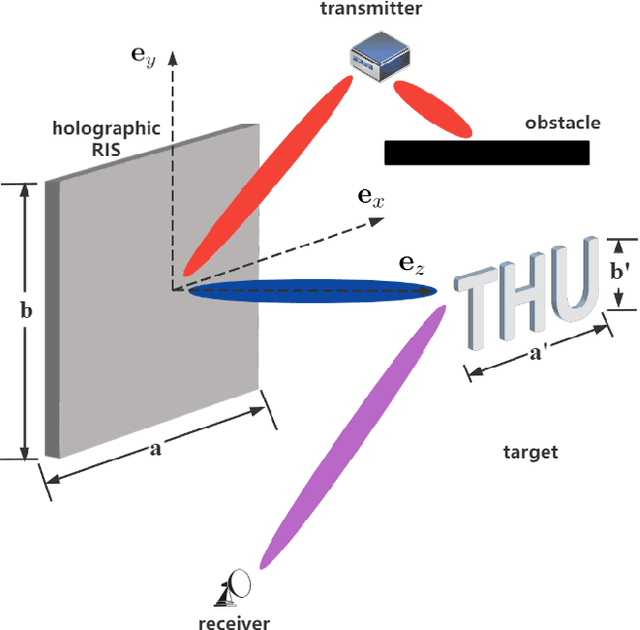
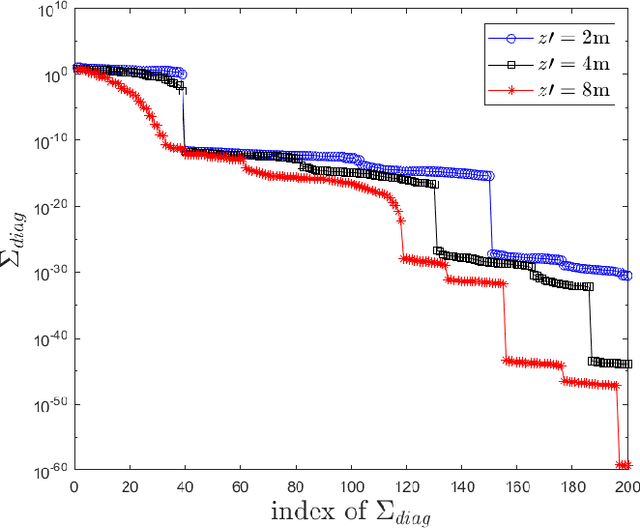
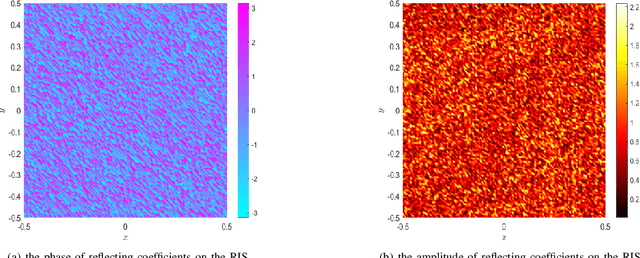
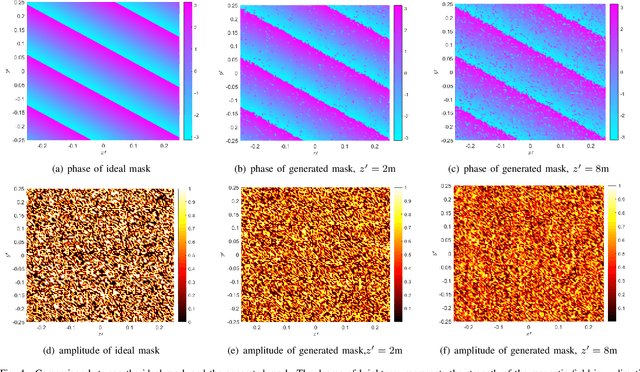
Abstract:Near field computational imaging has been recognized as a promising technique for non-destructive and highly accurate detection of the target. Meanwhile, reconfigurable intelligent surface (RIS) can flexibly control the scattered electromagnetic (EM) fields for sensing the target and can thus help computational imaging in the near field. In this paper, we propose a near-field imaging scheme based on holograghic aperture RIS. Specifically, we first establish an end-to-end EM propagation model from the perspective of Maxwell equations. To mitigate the inherent ill conditioning of the inverse problem in the imaging system, we design the EM field patterns as masks that help translate the inverse problem into a forward problem. Next, we utilize RIS to generate different virtual EM masks on the target surface and calculate the cross-correlation between the mask patterns and the electric field strength at the receiver. We then provide a RIS design scheme for virtual EM masks by employing a regularization technique. The cross-range resolution of the proposed method is analyzed based on the spatial spectrum of the generated masks. Simulation results demonstrate that the proposed method can achieve high-quality imaging. Moreover, the imaging quality can be improved by generating more virtual EM masks, by increasing the signal-to-noise ratio (SNR) at the receiver, or by placing the target closer to the RIS.
 Add to Chrome
Add to Chrome Add to Firefox
Add to Firefox Add to Edge
Add to Edge